Double Balance Watches: What They Are, Why They Are, And How They Work
Watches with two balances may look alike at first, but there’s a world of difference between different types.
Watches with double balance wheels exist in several different forms and for several different reasons. If you’re interested in complicated watches, chances are that you’ve run across more than one example; the Dufour Duality, the Audemars Piguet Double Balance Wheel, the Journe Chronomètre à Résonance, double balance and double tourbillon watches from Greubel Forsey, Armin Strom’s resonance watches, exotica like the Haldimann H2 Flying Resonance Tourbillon, and nearly forgotten exercises in complexity like the Roger Dubuis Quator, which has four balances on the theory that if two are better than one, four must be twice as good as two (I’m being a little facetious; the watch is somewhat an exercise in excess but there actually is a rationale, at least theoretically, for the design). Despite all the different double balance watch models produced, there are really only a few organizing principles behind all of them and they can roughly be divided into resonance watches, and watches which use a differential to take the average rate of two balances.
Resonance Watches
Resonance watches are extremely rare, partly thanks to their inherent complexity, but also thanks to the challenges involved in regulating them. The F.P. Journe Chronomètre à Résonance was the first wristwatch to be designed to take advantage of the resonance effect, and Journe’s technical solution is very similar to that employed by Breguet, who built the first resonance pocket watches which in turn were influenced by the work of his contemporary Antide Janvier, in double pendulum clocks.
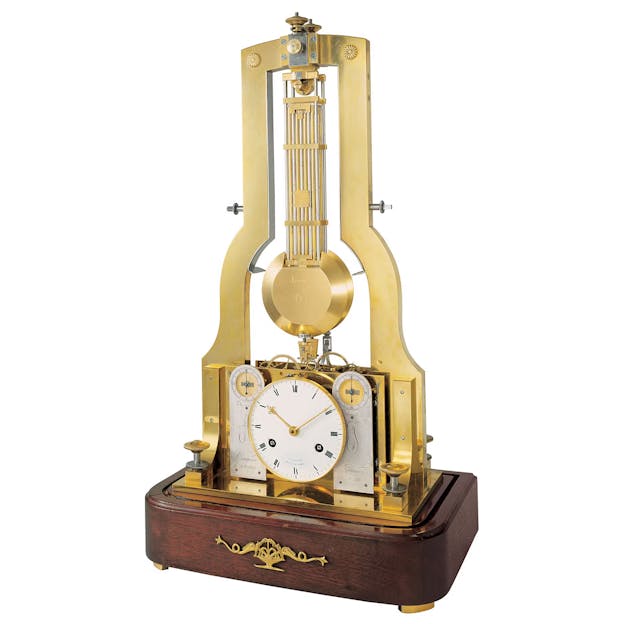
The resonance effect was originally observed by Christiaan Huygens, who designed the first successful pendulum clock in 1657. Since then, resonance watches have been constructed by Armin Strom, Beat Haldimann, and Vianney Halter but they remain rarities.
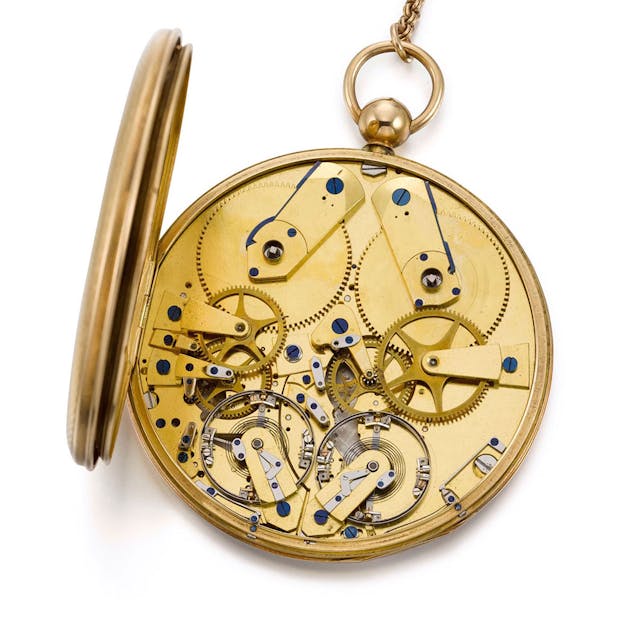
Resonance watches consist of two balances, which are designed so that they are able to exchange mechanical energy and, if their individual rates are close enough, to begin to beat in synchrony with each other. This phenomenon is sometimes a problem rather than an advantage in weight-driven pendulum clocks, which are driven by the force of a weight attached to a rope or chain. As the weight descends, it may begin to swing back and forth in synchrony with the pendulum and it may take so much energy from the pendulum that the whole clock stops.
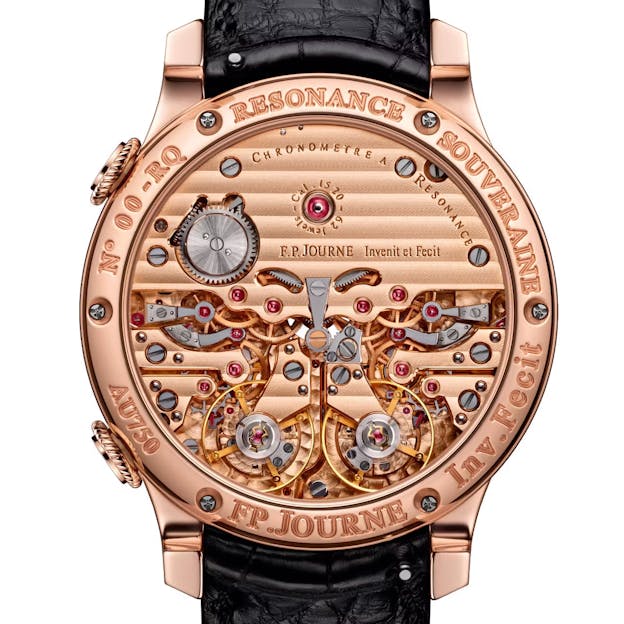
In resonance watches, this exchange of energy should reduce rate errors, thanks to the energy exchange between the two balances; if one balance is running slightly fast, for instance, half the excess energy should be transferred to the other balance, reducing the rate error. How well this actually works depends on how carefully the watch has been made and adjusted. Journe, for instance, has said that for his resonance watches to work, the two balances have to be adjusted so that there is no more than a five second per day difference between the two of them. The balances must also have a high enough amplitude to ensure that the moment of inertia is high enough for the resonance effect to occur; Journe’s second version of his resonance movement, the caliber 1520, incorporated a remontoir to ensure constant and unvarying torque is delivered to the balances.
In Journe’s watches, the balances are coupled mechanically through the mainplate, via the tensions exerted by the two balance springs as they oscillate. The forces involved are tiny but resonance can occur with what seem to be disproportionately small amounts of energy. Mechanical coupling through the mountings of the balances and the balance springs is also the strategy Vianney Halter employs in his resonance tourbillons.
Another strategy is to use some sort of mechanism that directly couples the balance springs. This is the approach used by Armin Strom as well as Beat Haldimann. In this approach, the outer terminal curves of the balance springs are directly physically connected to each other by a blade spring – in the case of Armin Strom, a blade spring with a very complex shape, to which the outer curve of each balance wheel is attached; the blade spring is essentially a mobile stud carrier.
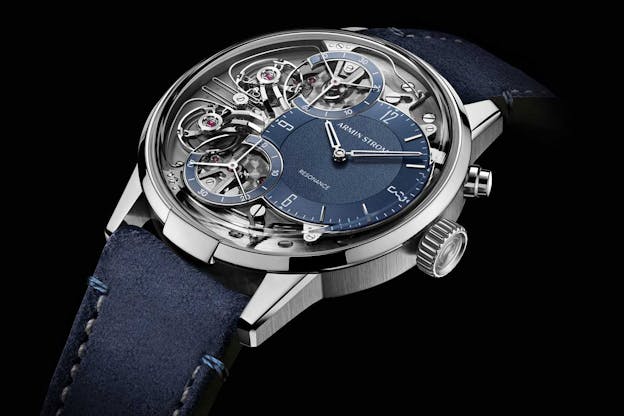
Each system hopes for the same basic advantage from the coupling of the two oscillators and each also has its potential drawbacks. The Journe resonance chronometers, for instance, must be adjusted very closely and anything that negatively affects balance amplitude or rate stability will tend to disrupt the resonance effect (this is of course true of watches with only a single balance, which likewise will, for instance, begin to show larger variations in rate as balance amplitude drops). The Armin Strom system may introduce additional energy losses due to increased mechanical load on the balance springs, and may also increase the possibility that the coupling system interferes with the natural frequency of the balance.
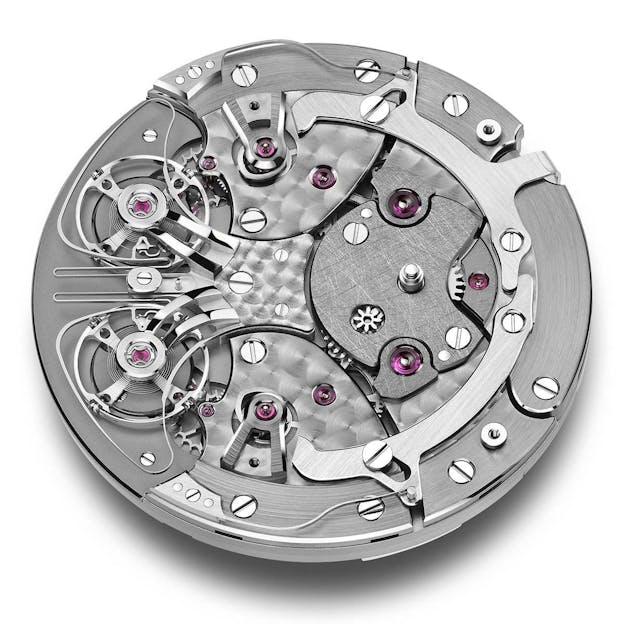
Although there are claims that the Journe balances are coupled by aerodynamic friction rather than energy transmitted through the mainplate, this seems to be disproven by the fact that Breguet tested his resonance watches both in a vacuum chamber and with a thin steel blade separating the two balances, and the resonance effect still occurred; Journe has said that he has tested his resonance chronometers with a barrier as well, with the same result as Breguet.
In both cases, the only way to settle the question of actual advantages would be to compare laboratory testing, which has not been forthcoming. The advantages of a resonance system in a world where Rolex is able to consistently deliver a maximum daily deviation in rate, of ±2 seconds per say and Master Chronometer watches, a comparable 0/+5 seconds per day error, are debatable but the consensus among collectors and chronometry enthusiasts is that these resonance watches are interesting as physical explorations of an historically interesting and mechanically fascinating phenomenon.
Double And Multiple Balance Watches With Differentials
The second type of double balance watches are double balance watches in which the two balances are not in resonance – at least, if they are in resonance it’s a happy accident rather than a specific feature of the design – and which are instead, linked by a differential which produces a single, average rate from the two individual rates of the two balances.
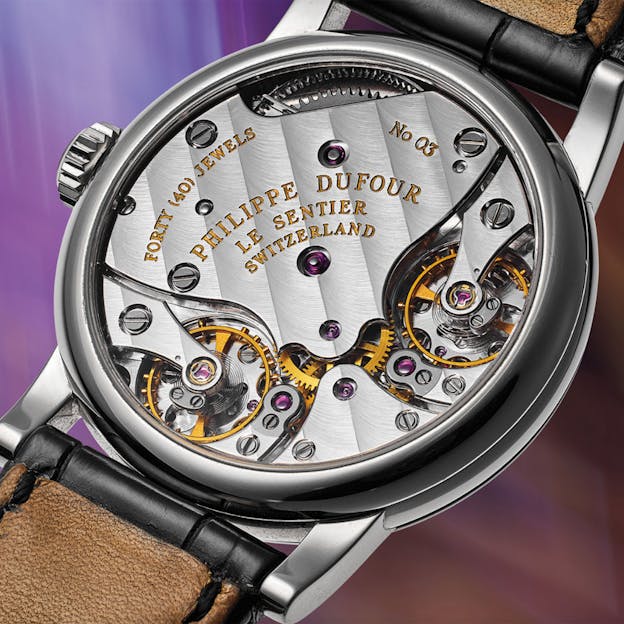
The classic example and the first dual balance wristwatch with differential, was Philippe Dufour’s Duality, which was first introduced in 1996. The watch is the ancestor conceptually of all modern multi-balance watches with differentials, and consists of a single going train, with a differential on the movement fourth wheel that takes the average rate of the two balances. Dufour, in creating the watch, was inspired by a school watch created by a student at Dufour’s alma mater, the École d’Horlogerie de la Vallée de Joux, from which he graduated in 1967; the watch was made in 1933 and is signed Jean R. Graef. The idea of taking the average rate of multiple oscillators stems partly from the practice in navigation of ships carrying multiple chronometers, and the navigators taking the average of the daily rates.
Prior to Dufour and the 1930s school watch, there was at least one attempt at making a precision pendulum clock with multiple pendulums linked by a differential – the E. Howard Watch & Clock Co. made a four pendulum clock for Hezekiah Conant, a Rhode Island based entrepreneur whose thread manufacturing company at one time had 2400 employees. Conant’s theory was that the reduction in error was always equal to the square of the number of pendulums, so four pendulums should all other things being equal, have one sixteenth the rate error of a single pendulum (which kind of reminds me of the way that razor manufacturers strove to outdo each other at one point in the number of blades you could attach to a single razor; you have to wonder if there isn’t a law of diminishing returns at some point).
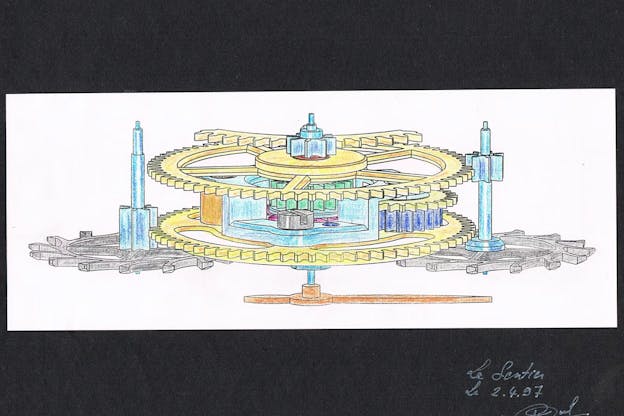
In the above diagram, the movement third wheel is at the top, geared to the pinion driving the two fourth wheels; the upper fourth wheel drives the escape wheel on the right and the lower, the escape wheel on the left. The rates of the two escapements are averaged and output to the seconds hand, visible at the bottom (in the diagram, the back of the movement is uppermost).
Dufour was kind enough to explain to me a few years back, that in creating the Duality he deliberately adjusted one balance to run slightly fast and the other to run slightly slow, with the expectation that the rate errors in various positions would tend to cancel each other. He also said that although this wasn’t part of the original concept, that the fact that the balance springs are pinned at opposite points should also tend to cancel rate errors in the vertical positions, an idea to which we will return in a moment.
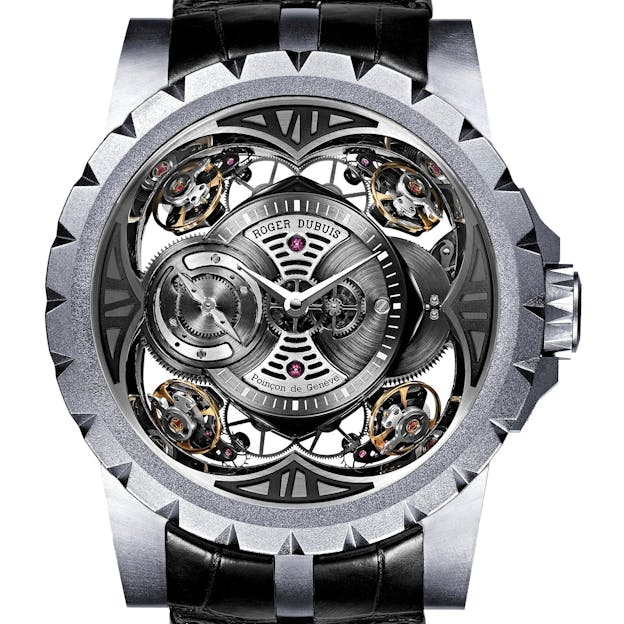
Other examples of multi-balance watches with differentials include the Greubel Forsey Double Balancier Convex and Quadruple Tourbillon GMT, the Ulysse Nardin Freak S Nomad, and the aforementioned Quator from Roger Dubuis, which is as much the spiritual heir to Conant’s oscillator maximalism as anything is. The basic idea behind all of them is that since the different oscillator systems are arranged along different geometric axes, that the rate errors in different positions should tend to cancel each other out.
The Audemars Piguet Double Balance Royal Oak
This is perhaps the rarest type of double balance watch – it may in fact be sui generis, if I can throw a little hifalutin’ Latin around; that is to say, it may be one of a kind. The Double Balance consists of two balances mounted on the same balance staff; they are therefore not able to beat independently and though there are two balances, this is therefore a single oscillator system, as opposed to resonance and differential-linked balance watches, in which there are two distinct oscillators (or more).

The fact that there are two balances does give the whole system a greater moment of inertia and therefore a greater resistance to physical disturbances – the extra mass should help shrug off temporary disruptions in rate especially due to physical shocks.

However the biggest theoretical advantage of the system is that the two balance springs are pinned at opposite points. Flat balance springs tend to “breathe” asymmetrically, which produces a sideways thrusting of the balance pivots against their jewels, and the friction produced thereby tends to exaggerate differences in rate in different positions, especially between the flat and vertical positions. If you have two balance springs pinned at opposite points, the balance pivots should remain centered and the rate variations should be reduced.
Do Double Balance Watches Work As Advertised?
This is the big question and it’s one that’s almost impossible to answer. Such watches are typically not submitted to independent testing agencies – the COSC, for instance, or METAS – and so we are left with admiring the theoretical advantages while wondering about the actual practical benefits. Nonetheless, such watches are mechanically ingenious, intellectually interesting and often beautiful to watch in action.
It’s possible under the right circumstances to obtain excellent chronometric results from unusual oscillator configurations; tourbillons, for instance, did very well in the now defunct Concours de Chronomètrie, in the years the contest was held, with the Greubel Forsey Double Tourbillon 30º scoring 915 out of 1000 possible points in 2011 (albeit this is a double tourbillon rather than a double balance wristwatch). However, the additional complexity of such systems also has the potential to introduce additional mechanical noise into the system and to derive any real benefit from the theoretical foundations for such watches, extremely careful hand-adjustment is necessary. As Stephen Forsey once said to me, memorably, many years ago, “It’s always a struggle to gain more than you lose.”
Frequently Asked Questions
- What is a double balance wheel watch?
A double balance wheel watch features two balance wheels instead of one, designed to improve timekeeping precision through either resonance or rate-averaging mechanisms. - How do resonance watches work?
Resonance watches use two balances that exchange energy through mechanical coupling. When properly adjusted, the balances begin to oscillate in synchrony, theoretically reducing rate errors. - Which brands make resonance watches?
F.P. Journe, Armin Strom, Beat Haldimann, and Vianney Halter have all produced resonance watches, though they remain rare due to technical complexity and fine regulation requirements. - What is the difference between resonance and differential watches?
In resonance watches, the two balances influence each other directly. In differential watches, a mechanical differential averages the rates of two independent balances to produce a single output rate. - Who created the first double balance wristwatch with a differential?
Philippe Dufour introduced the Duality in 1996, inspired by a 1933 school watch, using a differential to average the rates of two balances for improved accuracy. - What makes the Audemars Piguet Double Balance different?
It uses two balances mounted on the same staff, forming a single oscillator. The design aims to improve stability and reduce positional rate errors by pinning balance springs at opposite points. - Do double balance watches improve accuracy?
Theoretically, yes—but real-world gains depend heavily on adjustment and design. These watches are not typically certified by agencies like COSC or METAS, so their practical advantages remain debated. - Why are double balance watches considered collectible?
Collectors value them for their mechanical ingenuity, historical significance, and the aesthetic appeal of their exposed movements, even if chronometric improvements are marginal.

